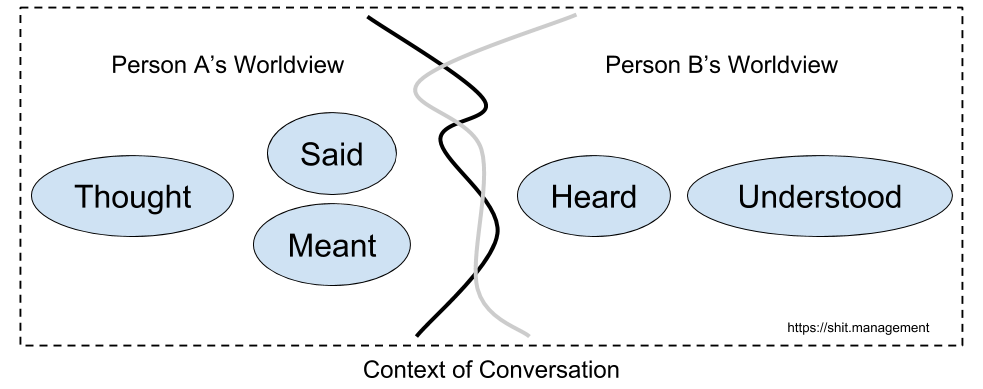I have spent most of my professional life trying to work with and understand machines, not people. Don't despair if you too find these sacks of water to be confusing. As a friend once said to me "This is a game and you are smart enough to learn the rules."
When you are talking to someone, it is important to remember there is a gap between what they are thinking, what they are saying, what they mean, what you hear and what you understand. The context of the conversation and each person's view of the world will influence what is perceived, i.e. the same discussion with your partner, boss and parent may lead to some very different conclusions in your mind.

People don't come into a situation with a blank slate. They enter into a discussion with their worldview already shaped by past experiences. If this is the first time you have met each other, then you only have a few seconds to make a good impression.
It is important to remember the individual in front of you is a person. One's thoughts, ideas and hopes are rarely based on only a rational breakdown of the current situation. Trying to understand where they are coming from and what cognitive biases and prejudices both you and them have, will help you work out how to communicate effectively.
It can be so easy to think that the meaning of what you are saying is obvious, but this is not always the case. People may come from different cultures or hang out with different social groups, and therefore misunderstandings can arise from:
- use of idioms
- cultural misunderstandings
- use of sarcasm
Does the phrase "Let's go hit the gym" conjure up images of grabbing some baseball bats and unleashing on poor Jim or bonding over a bench press at a health club? When someone says "That haircut is so you" is that a genuine compliment or do they think it is ugly and are being polite or are they making fun of you? When someone says "That's OK." is it OK or are they just tired of arguing or expecting you realise it is not OK and they are giving you a polite way to back down?
Then there are the physical issues that could hamper both the speaker or the listener:
- Are you speaking clearly?
- Are you mumbling?
- Do you have a thick accent?
- Is there too much background noise?
- Is the venue appropriate for the conversation?
So how to navigate this new terrain? First, seek to understand! "Most people do not listen with the intent to understand; they listen with the intent to reply." Dr Stephen R. Covey. Listen carefully, ask lots of questions and repeat back your understanding in your own words "So are you saying... "
Learn about nonverbal communication. A fair chunk of what is said is not through words along. Tone and body language give important clues as to what the words actually mean. I found "What Every Body Is Saying" by Joe Navarro very helpful.
Both active listening and understanding nonverbal communication are skills that need to be acquired, developed and honed. So it is important to learn, find opportunities to practice, observe people and situations and, spend some time reflecting. Don't get frustrated, just persevere and it will slowly start to make fall into place. Even when you guess incorrectly you will have a framework to refer back to i.e. "OK John was actually open to the idea, he was crossing his arms because it was cold. I must take that into account next time."
